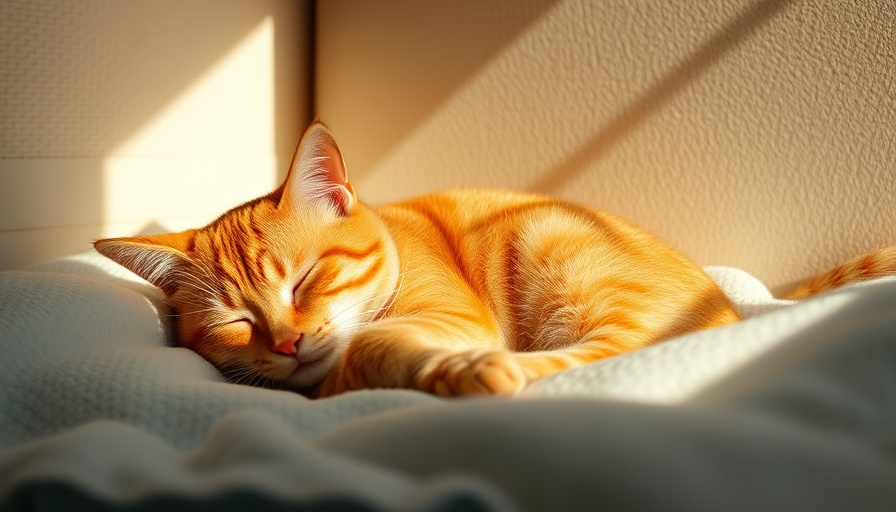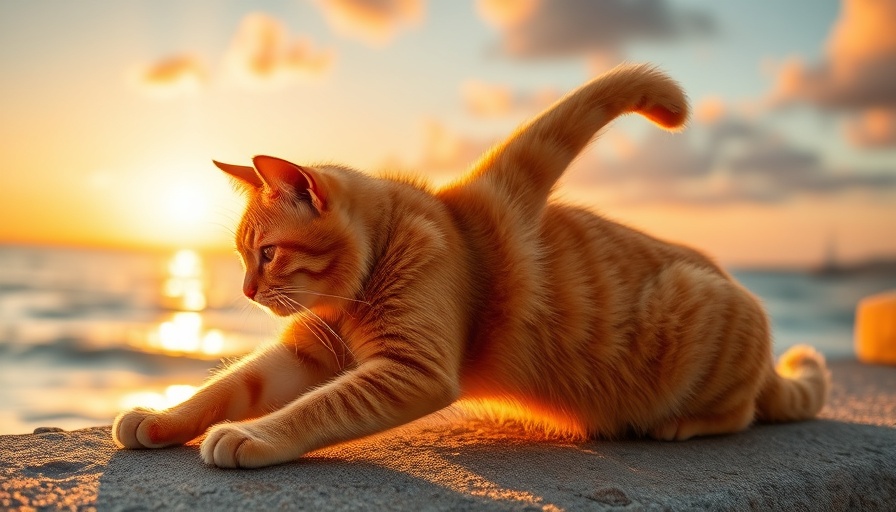
Understanding Feline Heat Stress
The summer months can turn into a perilous time for our feline companions as they navigate rising temperatures. With their average body temperature hovering between 100.4 and 102.5 degrees Fahrenheit, it is critical for cat owners to understand the potential dangers of heat exposure. If temperatures rise to 102.5 degrees or higher, veterinary intervention is needed. At 105 degrees, severe health risks like heatstroke can emerge, putting your pet in danger.
Signs That Your Cat May Be Overheating
Identifying heatstroke in cats can be challenging. Unlike dogs, cats do not pant as their primary means of cooling down. Instead, they rely on sweating through their paw pads and regulating their body temperature with grooming—spreading saliva to cool their fur. Observe signs like excessive panting, lethargy, or disorientation, which may indicate that your cat is overheated. If these symptoms arise, consult a veterinarian immediately. Luckily, platforms like PangoVet offer convenient online consultations to ensure your pet receives the best care possible.
Preventing Heat Stress: Practical Tips for Pet Parents
One of the most effective ways to safeguard your cat during the sweltering summer season is to maintain an optimal indoor temperature. Aim to keep your home cool using air conditioning or fans, and be mindful of sunny spots that may heat up throughout the day. Providing plenty of fresh water and creating shaded areas can also aid in cooling your cat off. When letting your cat outside, monitor the time spent in the sun, and allow them access to cooler zones.
How to Recognize Heatstroke in Cats
Another approach to ensuring your cat’s well-being is closely watching their behavior. Common signs of heatstroke include rapid heartbeat, vomiting, and restlessness. If you observe these symptoms, it’s imperative to reduce their temperature gradually by moving them to a cooler environment and offering water. A visit to the veterinarian may still be necessary to rule out underlying complications.
The Importance of Education in Cat Care
As someone involved in feline health—whether as a veterinarian, trainer, or pet food manufacturer—understanding these heat-related issues is vital. By educating ourselves and others, we can nurture a community that prioritizes the safety of our furry friends. Creating resources and awareness around summer heat safety can benefit not just individual pets, but the wider network of cat owners and advocates.
Future Predictions for Pet Care in Extreme Weather
As climate change continues to influence weather patterns, we can expect hotter summers and more extreme weather conditions. As professionals in the field, staying informed and adaptable will be crucial. Newer products, like sophisticated cooling mats or pet hydration systems, will likely gain popularity, offering optimal care solutions. Tracking these innovations could offer significant advantages to those seeking proactive measures to combat rising temperatures.
Taking Action for Your Cat’s Safety
The health and safety of our pets primarily lies in our hands. For pet parents, it means taking the time to ensure our living spaces are conducive to comfort and security. Explore strategies through collaborations with grooming experts, trainers, and accessory developers to create a more pet-friendly environment. Regular check-ins with your vet can also ensure that your pet is thriving, even in summer heat.
Ultimately, you are the best advocate for your cat’s wellbeing. Make a commitment today to implement these summer safety tips and stay informed about heat-related concerns. If you feel unsure, don’t hesitate to contact a vet online for advice on how to keep your beloved feline cool this summer; it's a simple step that can make all the difference.
 Add Row
Add Row  Add
Add 




 Add Row
Add Row  Add
Add 


Write A Comment